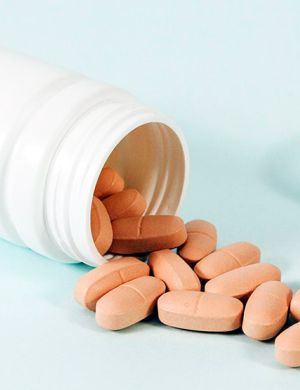
Medical Devices – USA, Europe, Asia and ROW Regulatory News – Jan 2025
USA
Guidance on Premarket Approval Application and Humanitarian Device Exemption Modular Review
The guidance provides information on the Premarket Approval Application (PMA) and Humanitarian Device Exemption (HDE) modular review program, outlining submission and review procedures. The modular review serves as an alternative to traditional PMA and HDE processes but does not apply to supplements.
Guidance on Notifying FDA of a Permanent Discontinuance or Interruption in Manufacturing of a Device Under Section 506J of the FD&C Act
The FDA guidance addresses Section 506J of the FD&C Act, added by the CARES Act, requiring manufacturers to notify the FDA of permanent discontinuances or interruptions in medical device production that may cause supply disruptions during or before a public health emergency (PHE). The guidance aims to help manufacturers provide timely notifications to prevent or mitigate shortages. It also encourages voluntarily sharing additional details to enhance FDA’s response. While serving as a baseline for 506J notifications, FDA may issue PHE-specific updates if needed.
EUROPE
Advice on SARS-CoV-2 on request from the Medical Device Coordination Group
The IVD expert panel advises that while SARS-CoV-2 can still cause serious illness, it no longer presents a significant mortality risk to the general European population. This may impact the classification of SARS-CoV-2 tests under Regulation (EU) 2017/746. Manufacturers should assess the implications, consult their notified body if a risk class change is needed, and ensure compliance with existing classification requirements. The MDCG guidance on IVD classification (MDCG 2020-16) is being updated, though it remains non-binding. Risk classification should be determined on a case-by-case basis, considering the evolving epidemiological context.
Revised versions and new guidance are available in the EMDN section
The page provides guidance documents to help stakeholders apply Regulation (EU) 2017/745 (MDR) and Regulation (EU) 2017/746 (IVDR). Most documents are endorsed by the MDCG and follow a standard format. While not legally binding, they offer a common understanding for consistent implementation of the regulations. Guidance is regularly reviewed, with outdated versions archived, and ongoing updates highlighted.
Revised versions of the PAR templates and the form to apply for designation as NB as well as their annexes are available in the Notified Bodies
The Notified Bodies section now includes updated PAR templates, the NB designation application form, and their annexes to streamline the conformity assessment and designation process under EU regulations.
Questions and Answers on vigilance terms and concepts as outlined in the Regulation (EU) 2017/745 and Regulation (EU) 2017/746
The Q&A document provides clarifications on vigilance-related definitions, reporting timelines, and manufacturers’ obligations under Regulation (EU) 2017/745 (MDR) and Regulation (EU) 2017/746 (IVDR) to ensure consistent application across the EU.
AUSTRALIA
Update: Use of market authorisation evidence from comparable overseas regulators and assessment bodies for medical devices (including IVDs)
The guidance explains how overseas assessments and approvals can support abridged TGA conformity assessments or serve as required documentation for ARTG inclusion of medical devices and IVDs.
Update: Transitioning to new manufacturer evidence for in-vitro diagnostic medical devices (IVDs)
The guidance assists sponsors and manufacturers in transitioning to new manufacturer evidence requirements for in vitro diagnostic (IVD) medical devices. The update is prompted by the introduction of the EU IVDR 2017/746, replacing the previous IVD Directive 98/79/EC, and the end of the transition period for accepting ISO 13485 certificates as manufacturer evidence unless accompanied by the EU Declaration of Conformity. Sponsors of existing IVD entries in the ARTG must take necessary actions to ensure ongoing regulatory compliance. The extent of required actions depends on factors such as device certification and changes to intended use. The guidance includes various scenarios to identify appropriate pathways for sponsors. In some cases, sponsors may need to submit a variation application or consider recall actions.
Update: Understanding application audit rules for medical devices including in-vitro diagnostics (IVDs)
The guidance is intended for sponsors applying for the inclusion of medical devices, including IVDs, in the Australian Register of Therapeutic Goods (ARTG). It outlines when an application audit may be conducted and describes the audit assessment process. Audits are performed to ensure that devices meet the relevant legislative requirements. Some applications require a mandatory audit under the legislation, while others may be chosen for auditing at the delegate’s discretion.
BELGIUM
Obligation for manufacturers to notify interruptions or discontinuations in the supply of medical devices and in vitro diagnostic medical devices
Starting 10 January 2025, manufacturers must report any interruptions or discontinuations in the supply of medical devices and in vitro diagnostic medical devices in the European Union if their absence could reasonably be expected to endanger patient or public health in one or more countries.
CANADA
Update: Validation rules for regulatory transactions in electronic Common Technical Document (eCTD) format
Health Canada has updated the validation rules for regulatory transactions submitted in the electronic Common Technical Document (eCTD) format to align with recent and upcoming process changes. These rules are based on several guidance documents, including those on eCTD preparation and the Regulatory Enrolment Process. The updated validation aims to ensure valid submissions and minimize errors. Sponsors are encouraged to use a commercially available tool to validate their transactions before submission. If validation fails, Health Canada will send an eCTD Validation Report detailing the errors.
CHINA
China advances comprehensive reforms to strengthen drug and medical device regulation
China has released a guideline to reform the regulation of drugs and medical devices, aiming to enhance the pharmaceutical industry’s quality and global competitiveness. Issued by the State Council’s General Office, the guideline sets target for 2027 to strengthen legal and regulatory frameworks, improve review and approval efficiency for innovative products, and ensure lifecycle regulation for safety and quality. By 2035, the goals include ensuring drug and device safety, efficacy, and accessibility, boosting innovation, and modernizing the regulatory system. The plan outlines 24 reforms across five areas: supporting R&D innovation, improving review processes, enhancing industry compliance, expanding international cooperation, and developing a modern regulatory system.
CZECH REPUBLIC
Notice for medical device manufacturers
Starting January 10, 2025, parts of Regulation (EU) 2024/1860 will take effect, requiring manufacturers to report production interruptions or terminations of medical and in vitro diagnostic devices to the State Institute for Medicines Control under specified conditions. These obligations are outlined in Article 10a of Regulations (EU) 2017/745 (MDR) and 2017/746 (IVDR).
FRANCE
The information of operators registered with Fimea for medical devices is available online
From January 27, 2025, manufacturers seeking exceptional access to market medical devices without CE marking must use a “simplified procedure” form. Granted under Article 59 of Regulation (EU) 2017/745, these exemptions allow temporary access to non-CE-marked devices if a proven clinical benefit for patients is demonstrated. The ANSM assesses requests based on submitted data and potential risks. This new procedure standardizes submissions, streamlining analysis and reducing processing times. Currently, it applies to medical devices, with a dedicated process for in vitro diagnostic devices to follow.
HONG KONG
Approval of COVID-19 Rapid Antigen Tests Under the Medical Device Management System
The Medical Devices Division has approved certain COVID-19 Rapid Antigen Tests (RATs) under its administrative management system for medical devices. These tests meet the required safety, quality, and performance standards. Additionally, the Department of Health (DH) continuously monitors safety alerts from other regulatory bodies and the World Health Organization (WHO) and manages reports of medical incidents related to these tests.
INDIA
CDSCO Notice on Merged Existing Medical Devices risk-classification
India’s CDSCO has issued a draft update to its risk-based classification of medical devices for public consultation. The update covers four categories: interventional radiology, radiotherapy, oncology, and Class A devices. Class A, the largest group with 803 devices, includes non-sterile and non-measuring products such as stethoscopes, enema bags, and testicular temperature regulation underpants. For the other three categories, CDSCO has proposed classifications for 375 devices. Interventional radiology, the second-largest category, predominantly includes Class B and C devices like PET systems. The 35 Class D devices, primarily in the radiotherapy section, also include some interventional radiology and oncology products classified as high-risk. Dated January 6, the document is open for feedback for 30 days.
CDSCO Notice on Merged Existing Medical Devices risk-classification
The Central Drugs Standard Control Organization (CDSCO) in India has implemented a risk-based classification system for medical devices as part of its regulatory framework. The merging of existing medical device risk classifications under CDSCO aims to ensure harmonization, clarity, and compliance with India’s Medical Devices Rules, 2017.
SAUDI ARABIA
Guidance on Innovative Medical Devices
The SFDA has established a dedicated pathway to accelerate the approval of Innovative Medical Devices, ensuring timely access while maintaining safety and effectiveness. The guidance defines designation criteria, review processes, pathway features, and application requirements for obtaining Medical Devices Marketing Authorization, targeting innovators, developers, manufacturers, and authorized representatives.
SOUTH KOREA
Preliminary Notice on the Re-enactment of the Medical Device Act Enforcement Regulations
The Preliminary Notice announces proposed revisions to the Medical Device Act Enforcement Regulations, aiming to expedite market entry for new medical devices, enhance regulatory efficiency, and reduce economic burdens on manufacturers. Key updates include fee revisions for newly developed medical devices, a reduction in pre-review fees, and exemptions for repeated submission of quality manager qualifications. Additionally, new penalties are introduced for false declarations and violations by medical device operators, along with a reporting system for promotion businesses. Stakeholders are invited to submit feedback by January 31, 2025. This is a regulatory update detailing changes to medical device regulations.
SWITZERLAND
Amendment of the Ordinance on In Vitro Diagnostic Medical Devices (IVDs) and the Medical Devices Ordinance
Switzerland has aligned its In Vitro Diagnostic Medical Devices Ordinance (IvDO) with EU regulations, extending transitional periods and restoring regulatory equivalence. Key changes include extended certificate validity for certain IVDs until 2027–2029, simplified labeling for professional-use devices, and an extended deadline for healthcare institutions to justify in-house tests until 31 December 2030. The new EU notification requirement for supply interruptions is not included. Device registration obligations under MedDO and IvDO will take effect on 1 July 2026.
THAILAND
FDA revises medical device advertising criteria and streamlines the permit application process to enhance consumer safety
The FDA has updated its criteria, methods, and conditions for medical device advertising to streamline the permission process and align with current needs while ensuring consumer safety. The revised regulations mandate that advertisements for medical devices must pertain to approved, detailed, or registered products, with truthful and non-exaggerated claims to protect consumers and society. These changes aim to clarify guidelines, reduce official discretion, and simplify the app
Don’t miss out! Click here to stay in touch.
Categories
- Biopharma (48)
- Consumer Health (16)
- Cosmetics (8)
- Diagnostics (5)
- Digital Health (8)
- Food (2)
- Medical Device (101)
- OTC (4)
- Regulatory Intelligence (5)
- Standards (41)
Recent Blogs
Get the latest updates from Vistaar

Related Posts
CONNECT WITH US

Let's talk about how DDi can help you






